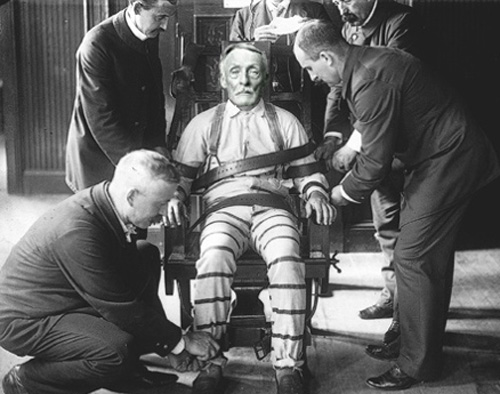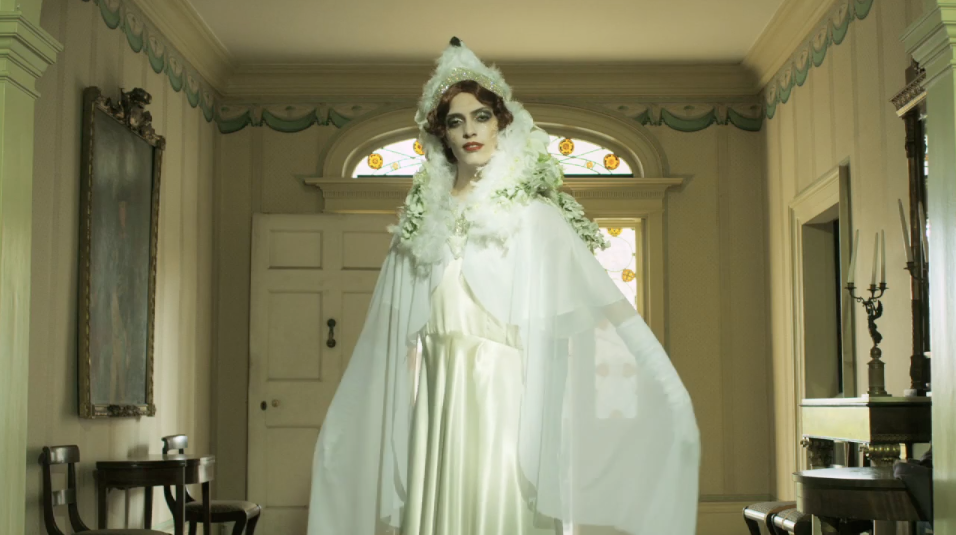“I do believe that there is cosmic synchronicity that we don’t understand,” Rachel Mason told me on a chilly night in her Long Island City studio. Eight years ago, she began researching an eighty-year-old newspaper story for her new opera “The Lives of Hamilton Fish”– the making of which, alone, is a long story.
Mason first learned the Hamilton Fish story in 2006, when she was teaching in an art program at Sing Sing Prison. While researching the prison’s executions at the local library, she came across a microfiche newspaper cover of the January 15, 1936 edition of the Peekskill Evening Star, announcing two deaths: one, an obituary for a prominent statesman named Hamilton Fish. Another, of the impending execution of a serial killer, Hamilton “Albert” Fish.
The Hamiltons were social opposites. Statesman Hamilton Fish II’s father (named after family friend Alexander Hamilton) was governor of New York, and Hamilton II was a congressman and served as Assistant Treasurer under Theodore Roosevelt. “His name is on the recreation center in the Lower East Side,” Mason added.
As she found in her long investigation (hear her podcast above), “Albert” Hamilton Fish, was and is notorious for horrific crimes against children: cannibalism, torture, dismemberment. “He’s the ultimate serial killer, above John Wayne Gacy”, Mason told me. “People have tattoos of him.” In her research, Mason made a podcast interview with Fish’s biographer Harold Schechter, author of The A to Z Encyclopedia of Serial Killers: “The Fish book was the most difficult book for me to write, of all the books I’ve written”, he said.

Image of Hamilton “Albert” Fish on the electric chair. (Image via http://www.travelcreepster.com/albert-fish-the-werewolf-of-wysteria.html#.VMpa-sZZXGo )
After dogearring the story, Mason dropped the project for a few years, til her friend Max Blumenthal (now a well known political commentator) offered to introduce her to his boss, the editor of The Nation Magazine, about some of Mason’s recent political artwork. His name was Hamilton Fish V.
“It was a really strange meeting,” Mason told me. “I didn’t really know what I was doing there. But at the end, I pulled out the newspaper and said ‘this guy’s name is Hamilton Fish, and this guy’s name is Hamilton Fish. Are you related?’ He said, ‘Well, I’ve never heard of the serial killer…but that’s my great grandfather.’”
“This is where it got really weird. I was on my bicycle riding home from this meeting, and it was like lightning struck me. I got the whole first song written in my head, and I got home, writing ferociously.”
The opera, which will be screening at Art in General on March 6th, is more of a fiction than a documentary. In real life, “Albert” Fish took the 10 year old Grace Budd to a house in Rochester, NY, chopped up her body, consumed it in a stew, and masturbated compulsively over the course of nine days. He then wrote a letter to Budd’s mother, which serial killer aficionado Joe Coleman has called the “Magna Carta” of serial killer documents. Fish details the murder in full, ending the letter with the line: “I did not fuck her. Though I could, had I wished. She died a virgin.”
Given the horrific details of cannibalism and torture, Mason’s creative decisions might put off some viewers. The opera sympathizes almost entirely with the murderer (whose victim is poetically referred to as a “stolen child”). But Mason seems to have borrowed the men in name only; the rest comes from a more innocent curiosity about human nature. A handspun, indie production casts two leads with boyish faces and soft eyes, with Koi fish-like lightning bolts painted on their faces; they lip synch to a soundtrack entirely of Mason’s echoing voice, with an acoustic harmony and self-perpetuating melodies reminiscent of Joni Mitchell. Overall, Mason sets a mystical futurist tone with a mix of Victorian and “Cabinet of Dr. Caligari”-like interiors; a contrast of winter and spring; and shimmering bridal costumes. And the Hamiltons’ paths cross in dreamy, and romantically tragic ways.
Mason paints both characters as men who’ve lost their loves (the murderer, in this telling, was in love with his victim). The opera parallels between the suicide of Statesman Hamilton’s wife and Murderer Hamilton’s child victim, suggesting that both passions are equally legitimate. Midway through the piece, Statesman Hamilton is visited by Lenora Piper, a spiritual medium nicknamed “the White Crow”; Piper (decked out in a glittering, floral white gown) sings about the dead, overtop images of his ghost wife lovingly sheltering the murdered child. While the statesman mourns for his wife, Fish the killer cradles a doll. The viewer is asked to sympathize with the widower just as much as with the old man who expresses his love by murdering young victims victims. We can probably safely assume that this is where the fiction comes in; this is a story about humanity, not murder.
The artist plays the editor and narrator, whose lyrics both voice inner monologues and her overarching narrative– often, she performs singing live in front of a projection of the film. One of the film’s most memorable choruses: “I’d go if I could, if I could, into the lines of the Evening Star.” (Eventually, she sort of did; her recent live performance made it into the Peekskill Daily Voice). In the end, “Albert” Fish seems terrified by the prospect of his death sentence– a far cry from what the real Fish had emotionlessly called a “supreme thrill”.
When I asked her why her version seemed to sympathize mainly with “Albert” Fish– who appears in nearly every scene, whether onscreen or in the plot– Mason observed “people are inherently much more interested in serial killers. People want to understand why– we’re all people. All these facets of people are within the scope of human nature.”
Ultimately, it’s that mix of fascination and sympathy which comes through in “The Lives of Hamilton Fish”, more than the history which inspired it. It was Mason’s final detail which underscored all of this; on July 13th, 2011, she was lying in her hospital bed, recovering from delivering her son. Overhead, she was watching a TV news broadcast of a recent kidnapping story; a man named Levi Aron had just confessed to murdering and dismembering Leiby Kletzky, an 8 year old Hasidic Jewish boy. Just after giving birth to her own son, Mason started a letter-writing exchange with the murderer, something only the artist would think to do.




Comments on this entry are closed.